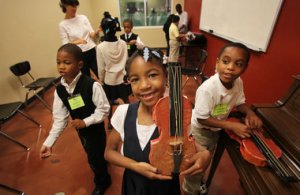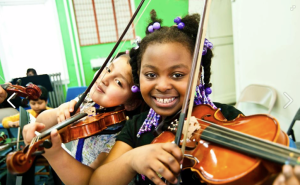An Interlude: The World of Online Discussions on the Arts
by Andrew Swensen
Over recent weeks, The Muse Dialogue has had a series of very productive exchanges with other efforts in online media, and I want to acknowledge those who are also laboring on behalf of the arts. It is in the best interest of all of us, in the best interest of the arts generally, to cultivate those connections and to expand the reach of each of them. So I am taking this morning to express our gratitude for this work and to share a few resources that may interest our readers. For those visiting The Muse Dialogue based on recent referrals to our series on young musicians, those articles can be found in the table of contents to that issue – and we encourage you to explore the rest of our site when you are done reading those pieces.
Greg Sandow has been composing a blog for artsjournal.com, in which he has taken a hard look at the future of classical music. In the site overview, he writes, “For years we’ve been talking about a classical music crisis. And the crisis is very real … We now have to ask whether classical music, in its traditional forms, still is sustainable. The answer, I think, is ‘probably not.’” In a post this week, he discusses specifically the role that conservatories play in the crisis of classical music, and argues persuasively for the need for innovation — an innovation that he sees as largely absent. We encourage all of our readers to have a look at his most recent post, which assembles a thorough list of those trying to innovate and well characterizes the barriers that the conservatory system imposes on innovation.
Before we leave the world of music, I want to put out another resource that has been reposting some stories from TMD, The Classical Digest. The Classical Digest does an excellent job of gathering news, commentary and video from the world of classical music, and it is an excellent resource for finding material from around the world.
An interesting connection has come our way from New York through the work of Frances McGarry. A veteran of the theater both on stage and behind the scenes, McGarry has launched an effort in arts advocacy, which includes two initiatives that we recommend. First is a collection of 100 stories from the arts, and McGarry is gathering these stories leading up to Arts in Education Week, September 11-17. McGarry has also begun an online video series, First Online With Fran, and the initial episode presents an interview with Angelina Fiordellisi, Artistic Director of Cherry Lane Theatre.
From the other coast, Oregon specifically, comes Combustus. Combustus is an online magazine created by Deanne Piowaty, and it is a beautiful site that offers a variety of interviews and stories on the arts. Piowaty has done excellent work in crafting stories from across all art forms, and we heartily recommend a long, lingering browse of her site.
I have had some very rewarding correspondence with Greg, and some heartening phone conversations with Deanna and Fran. Thank you all.
We want to thank all of these individuals for their work, and for their interest in The Muse Dialogue. We can never learn too much about the arts, or care too much about their future in our schools, in our public spaces, and in our lives.















